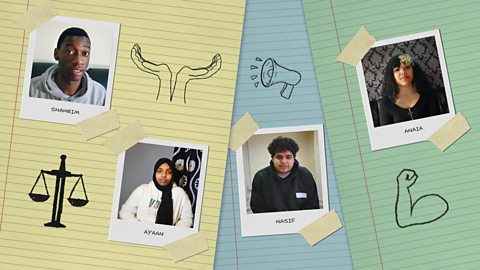
We need to ensure that we create an inclusive culture, that allows for all of our children to flourish.
By Aisha Thomas, Diversity and Inclusion education consultant
As an assistant principal, a specialist leader in education for Equality, Diversity and Inclusion and Community and the current chair of the Race Equality Steering Group for my federation, I understand the importance of ensuring that equality, diversity, and inclusion is at the forefront of our minds and is embedded into the culture of our schools.
Understanding your identity is an important part of a child’s development. It takes place in the early years of their lives and follows them into adulthood. Equality, diversity, and inclusion, SMSC and PSHE have a place in establishing what this will look like.
We have a responsibility as educators to prepare the whole child and ensure that approaches are holistic and not simply academic. Our students are more than an attainment score at the end of KS3, 4 and 5, they are our hope for the future, and identity is a necessary component for our children to thrive and add to the world.
2020 presented us with an unprecedented set of circumstances beyond what would most of us could have imagined. The pandemic ripped through our lives and dramatically changed the landscape of education. It exposed and exacerbated inequalities, racial inequality in particular.
However, tackling racism in education is not a new concept and remains a challenge in schools. The Swann report of 1985 referred to ‘education for all’, yet we still live in a time where inequalities exist.
Black and Asian pupils are still more likely to be excluded, to be stopped by the police, to be subject to discrimination via policies and process. Their histories and cultures may not be taught widely or may feel marginalised due to forming part of initiatives such as Black History Month.
What does that mean for us as educators? How do we make change and create an inclusive culture that allows for all of our children to flourish?

The statutory guidance
The Equality Act 2010 outlines the nine protected characteristics and the public sector duty that schools need to adhere to. It's important to have read all associated guidance, as it explains what is required and should inform and govern the work of the school.
All schools should ensure they have the following:
- Equality, Diversity, and Inclusion (EDI) policy, which is available on the school website;
- Equality statement;
- Equality Objectives that are reported on annually and updated every three years;
- Relationships, Sex and Education policy, with specific reference to PSHE delivery and the teaching related to LGBTQ+AI communities; and
- Completed Equality Impact Assessment on their policies.

The beginning
One of the most common questions I receive is: "Well, how do we do it?"
First, we need to start with ourselves. How often do we take time to consider our core believes and values? Do we consider where information comes from, the knowledge we gain from our parents and carers and the impact that has on us?
All these aspects will influence the way in which we engage with Equality, Diversity and Inclusion.
We should start by asking ourselves the simple question: What does Equality, Diversity and Inclusion (EDI) mean to me?
Grab a piece of paper and map it out. Then write down how you would describe your identity.
The process
When embarking on your EDI journey, set out a very clear process. You must identify your team:
- Who is the EDI lead?
- Where are your champions?
- Who is holding the process to account?
- Where are you getting support?

The work
Step one
When promoting a healthy environment of inclusion, it is important to take stock of where your school is on the journey.
Review and audit all aspects of your school, curriculum, staff, students, environment, information and display boards and website.This process can include data which is qualitative and quantitative.
This information will provide you with a baseline to work from and prepare you for the process that will follow.
Step two
Take a deep dive and listen to the voices of your stakeholders. This should include staff, students, governors and the community. All stakeholders must have a sense of connection and belonging.
The work of EDI requires all members of your school to be on board. It cannot be a top-down approach and the responsibility equally should not fall upon the marginalised and only take place at a grassroots level.
Step three
Ensure you set out your key priorities. It is important that the priorities are shared throughout your school community - the vision and the ‘why’ should be clear.
Once the priorities are clear, outline the actions you will take. Create an action plan and outline the key priorities for your school. It is important to note that you cannot do everything!
Your action plan should include what steps you will take, your success criteria, milestones, staff responsibilities and resources that will be needed. This provides a clear accountability process.
One of the biggest challenges of this work is that staff feel that they do not have the knowledge to engage with the topic. I like to apply the 20/80 rule (Pareto Principle). The principle states that 80% of our outcomes will come from 20% of the causes. Therefore, in the context of EDI work, 20% will equate to insight and knowledge, but 80% will be subject to practice.
How often are schools applying the principles of learning? Do we see the changes in our curriculum? Do all children feel safe? Are all cases of discrimination reported and responded to?
Step four
Review your work. Ensure that is does not became a dusty action plan that is not reviewed and accessed on a regular basis.
Step five
Create legacy for your organisation. Ensure that the work is embedded into the fabric of your organisation and that it becomes the golden thread in your school.
What can the work include?
Training and CPD
Ensure that all staff access to training and CPD. Most staff want to do the right thing. However, they feel ill-equipped and unprepared.
Training and CPD can take many forms such as:
- External training
- Hearing ‘lived experiences’ (See BBC Teach's Crossing Divides.)
- Reading
- Research pieces
- Podcasts
- Videos
- Articles
- Teach meets and
- Conferences
The work of EDI requires all members of your school to be on board.
Curriculum
Most educators default to history or the humanities department, as these subjects naturally lend themselves to the opportunity to challenges the narratives and perspectives we have been taught.
Here are some examples of how the curriculum can be diversified:
But humanities are not the only subjects that require diversity and representation. For example, PSHE can be seen through a lens of lessons about identity and culture.
Start by reviewing what you teach in your subject area. Then ask yourself these questions:
- What facts are you presenting?
- What narratives are being taught?
- What is your perspective and understanding?
- Which communities are being depicted?
- Are you only presenting trauma?
- What is the lens in which the knowledge is being delivered?
- Who are the protagonists?
- What imagery and resources are being used?
- Who are the students that you have in your room? What are their lived experiences?
Start with what you have when beginning the journey.

Where can it happen
EDI teaching and learning can happen in all aspects of school life. For example,
- Assemblies
- Cultural evenings
- Tutor time discussion
- Trips
- Student debates
- Performances
- Guest speakers
- Visual displays
- Podcasts
- Resources
- Library and other learning spaces
- Extra-curricular activities
However, the work does not stop there. We must consider all areas of education.

Allyship
Show allyship and solidarity to your students and colleagues. This can be demonstrated in the work you are doing, the initiatives you support and the way you handle and approach discrimination.
The BBC Teach Allies films explain the importance of active listening and hearing the experiences of those from marginalised groups.
Our students provide a wealth of knowledge and experience; however, we must be willing to listen and put into practice what they are teaching us. We must model the behaviour we expect to see and demonstrate in all aspects of life, that each and every child deserves the opportunity to succeed, irrespective of the identities and intersections that they hold.
I firmly believe that until we live in a society where we are all represented, one of the questions will always be, 'Do I belong?' - something which I spoke about in my 2019 TEDx talk, ‘Why representation really matters’.
As educators, we owe it to ourselves and future generations to do the most good that we can. For them, for us, and for education.

Teacher Support Articles. collection
All our articles for teachers in one place, sharing peer-to-peer advice and personal experiences.

Being an ally to your students from black, South Asian and mixed heritage backgrounds. collection
In these short films students and teachers share their tips for encouraging everyone to be better allies and for working towards a truly inclusive educational experience.

Supporting your students of East and South East Asian heritage. document
In the wake of Covid-19, East Asian and South East Asian communities have experienced increased racism, even on school grounds. How can teachers help?
